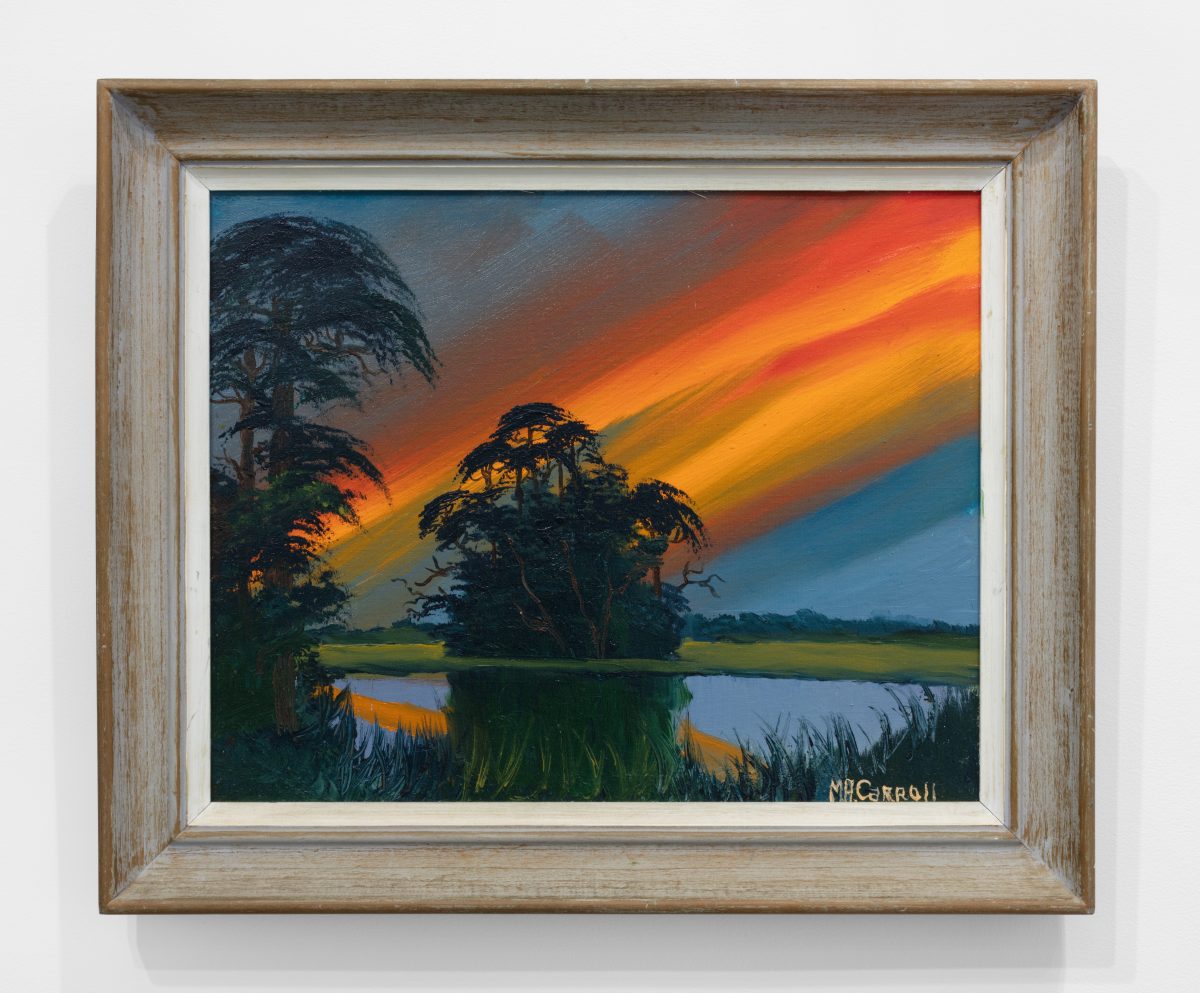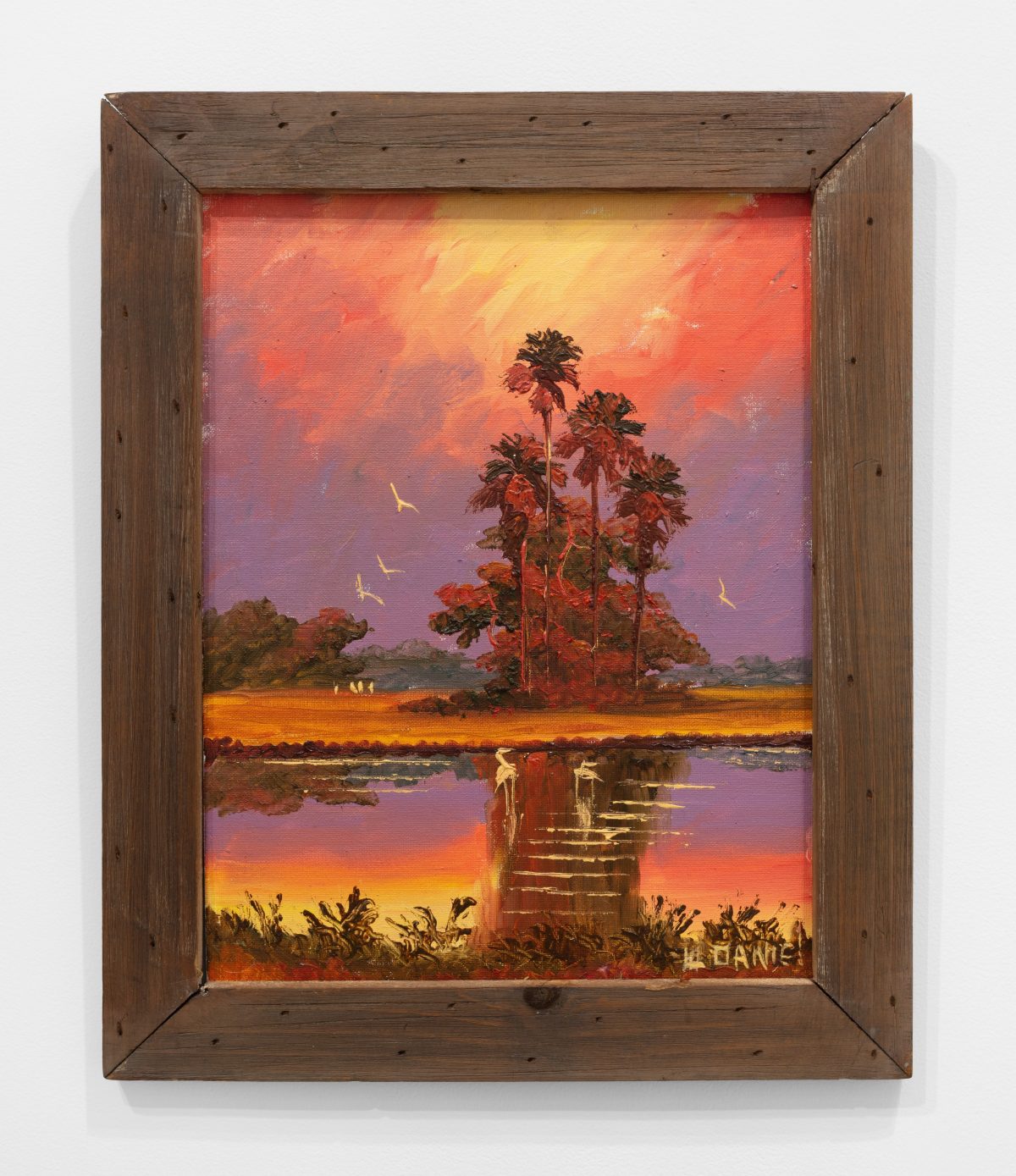
For nearly as long as there has existed a state called Florida, there has also endured a fantasy of Florida: a paradisiacal Shangri-La of windswept beaches, kaleidoscopic skies, and year-round tropical weather inviting enough to take the sting out of any blistering cold, Northern winter. Tourists, snowbirds, and permanent transplants alike have flocked to the state in search of this Floridian daydream. Beginning in the mid-1950s and through the early 1980s, a loosely affiliated group of young Black painters, mostly from in and around the Ft. Pierce area on the state’s eastern coast, began to paint the mythologized land- and seascapes. This group of painters has retrospectively come to be known as the Highwaymen — a nod to their mobile means of selling these bucolic depictions — and a small but important eponymous exhibition on the collective, currently up at Charles Moffett Gallery, uplifts its body of work into a broader spotlight.

As Black individuals living in the segregated South, the Highwaymen were presented with limited opportunities for employment and economic advancement. A small group of men who had some painting tutelage under the direction of A.E. Backus (a well-regarded Florida landscape painter in the traditional style) quickly realized there was a demand for selling the fantasy of Florida at reasonable prices. Subverting the entrenched racist sociocultural structures of the time, they began churning out oil paintings of their surroundings, usually done on Upson board (an inexpensive roofing material) and frequently framed by the artists themselves with crown molding. Originally made for tourists and then increasingly marketed to the hotels, condominiums, and office buildings that were quickly cropping up along the coast during Florida’s post-war building boom, the paintings almost uniformly depict ideal Floridian topography. The painters worked quickly, frequently laboring over several canvases at one time. Then they packed their wares in the car, sometimes with the paint still drying, and traveled the coast to sell their recent works.

Though their reasons for making these landscapes may have been pragmatic, the individual hands behind the paintings are deft and assured. Until recently, the Highwaymen were an anonymous consortium. However, renewed interest in the work and recent scholarship have finally drawn out the names of many of these painters. At Charles Moffett, individual works by six of these painters (and one large, collaborative painting) are on view. The paintings all depict either an ocean beach or a tropical wetland; nearly all are devoid of any trace of humanity.

The Highwaymen were supreme colorists. In an undated work, “Untitled (Wetland Scene)” by Mary Ann Carroll (the sole female artist among the identified Highwaymen group), fiery oranges slash across a moody gray sky, casting an island of palm trees at the foreground into murky shadow. “Untitled (Rainbow Sky)” (also undated) by Rodney Demps exhibits virtuoso brushwork in an oceanside sky, finely graduated by complementary colors — citrus orange bleeding gently into robin’s egg blue, buttercup yellow, and lilac — before washing into Demps’s gently rolling sea. Foregrounding this scenery is a cluster of surrealistic palm trees, swabbed in with brushy dollops of paint and cross-hatched by a palette knife.

The collaborative painting on view is notable not only for its relatively larger size (the Highwaymen tended to work small) but for the harmony of its various styles of painting that emerge upon close consideration, fusing on the canvas with a sublime melding of color. Rarely does one expect to witness a citrine sky, but Carnell Pete Smith effortless rendered the Floridian heavens in just that hue above a churning pearl-gray sea painted by Alfred Hair. Rounding out this group effort is a looming palm tree by artist Harold Newton, which anchors the landscape at the far right of the canvas. Its windblown fronds both reach towards the sky and thrash towards the ocean. Though the painters typically worked individually and for themselves, this rare collaboration attests to the loosely organized community that sprung up amongst the artists and the supportive, creative atmosphere their affiliations generated between each other. It also manifests a collective appreciation for the abundant nature they regularly witnessed, and which surrounded them.

During the years that the Highwaymen were active, the Florida coast still retained large expanses of beach and marsh that were untouched. The artists, for all their mercantile activity, nonetheless were deeply connected to this land, as their soulful renderings of it make clear in their work. Careful study of these landscapes, both through the act of painting and their countless hours on the road, led to an incontrovertible understanding of their sense of place. Nearly all that unspoiled scenery is now gone, overtaken by Florida’s breakneck overdevelopment. In the wake of the Surfside Condominium calamity earlier this summer, where the partial collapse of the building due to both land subsidence and shoddy engineering led to the loss of nearly 100 lives, it’s poignant to note that the Highwaymen paintings are an environmental time capsule for a state highly threatened by the climate crisis. Florida’s former wild nature, which can never again be precisely reclaimed, is immortalized in their works.

Their paintings also embody our all-too-recent history, which, through discriminatory racial stratification, forced a group of Black Floridians to cultivate a collective ingenuity that allowed them both creative expression and economic success. “To inhabit this country is to be marked by residues of its still unfolding history,” Lauret Savoy wrote in her 2015 book Trace: Memory, History, Race and the American Landscape, “a history weighted by tangled ideas of ‘race’ and of the land itself.” Through the paintings made by the Highwaymen, another untold American story unfolds.

Highwaymen continues at Charles Moffett (511 Canal Street #200/Buzzer 3, Manhattan, New York) through August 13. The exhibition was curated by Nina Johnson and Charles Moffett.
0 Commentaires